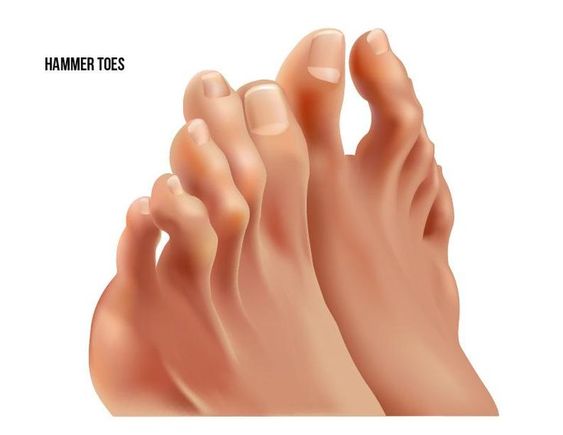Introduction
Hammertoe is a foot deformity that causes an abnormal bend in the middle joint of a toe, making it resemble a hammer. This condition typically affects the second, third, or fourth toe and can cause pain, discomfort, and difficulty walking. While hammertoes can develop at any age, they are more common in adults.

The development of hammertoes is often gradual and can be attributed to various factors, including ill-fitting shoes, muscle imbalances, and underlying medical conditions like arthritis. High heels and shoes with narrow toe boxes can put pressure on the toes, forcing them into a bent position over time. Muscle imbalances can also contribute to the development of hammertoes, as weak muscles can allow the toes to become contracted.
Causes of Hammertoes
As mentioned above, hammertoes can develop due to several factors. Some of the most common causes include:
- Ill-fitting footwear: Shoes that are too tight, too short, or have high heels can crowd the toes and force them into a bent position.
- Genetics: Some individuals may have a genetic predisposition to developing hammertoes.
- Foot injuries: Trauma to the toe or foot can contribute to the development of hammertoes.
- Muscle imbalances: Weaknesses or tightness in the muscles of the foot can disrupt the balance of the toes, leading to hammertoe deformities.
- Medical conditions: Certain medical conditions, such as arthritis, diabetes, and stroke, can increase the risk of developing hammertoes.
Symptoms and Diagnosis
Hammertoes often present with noticeable symptoms, including:
- Bent toe: The most prominent symptom is the visible bend in the middle joint of the toe.
- Pain and discomfort: Pressure from footwear or walking can cause pain in the affected toe and surrounding areas.
- Corns and calluses: The bent toe can rub against shoes, leading to the development of corns and calluses.
- Difficulty walking: Hammertoes can make walking painful and challenging, especially in shoes that don't accommodate the deformity.
Diagnosis of hammertoes typically involves a physical examination by a medical professional. They will assess the toe's flexibility, range of motion, and any associated pain or discomfort. X-rays may also be used to confirm the diagnosis and rule out other conditions.
Relief and Treatment
Fortunately, various treatment options are available to address hammertoes and alleviate symptoms. The approach will depend on the severity of the condition.
- Conservative Treatments: For flexible hammertoes, conservative treatments may provide relief. These include:
- Padding and Taping: Cushioning the affected toe and using tape to reposition it can reduce pressure and pain.
- Orthotics: Custom orthotics can help support the foot and realign the toes, improving comfort and foot function.
- Exercises: Specific foot exercises can help strengthen toe muscles and improve flexibility.
- Surgical Intervention: If conservative measures prove ineffective or the hammertoe is rigid, surgery may be necessary. Surgical options may involve:
- Tendon transfer or lengthening: This procedure helps correct the alignment of the toe by adjusting the tendons.
- Joint resection: Removing a small portion of the bone in the affected joint can reduce the bend in the toe.
- Fusion: In some cases, fusing the bones of the toe joint is necessary to eliminate movement and alleviate pain.
Choosing the Right Footwear
Proper footwear is crucial in managing hammertoes and preventing further complications. Here are some tips for choosing shoes that accommodate hammertoes:
- Wide toe box: Opt for shoes with a wide and deep toe box that allows ample space for the toes to move freely without being constricted.
- Low heels: Avoid high heels, as they put excessive pressure on the toes and can worsen hammertoes.
- Soft and flexible materials: Choose shoes made from soft materials that can bend and flex with the foot, reducing pressure points.
- Proper fit: Ensure the shoes fit properly and provide adequate support for the entire foot.
Addressing hammertoes promptly with appropriate treatment and footwear can significantly improve foot comfort and function, allowing for a more active and pain-free lifestyle.





